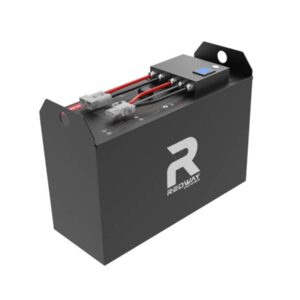How do you make batteries last longer?
To extend battery lifespan, maintain charge levels between 20%-80%, avoid extreme temperatures, and use manufacturer-certified chargers. Lithium-ion batteries degrade faster when fully charged or deeply discharged. Optimize device settings to reduce power draw and calibrate batteries annually. Proactive thermal management and avoiding fast charging when unnecessary further preserve capacity.
How to Maximize Forklift Battery Lifespan
What charging habits preserve battery health?
Partial charging cycles significantly reduce lithium-ion degradation. Keeping batteries between 20-80% charge minimizes stress on cathode materials. For example, charging from 30% to 70% daily creates 0.4 “cycle equivalents” versus 1.0 for full cycles

Lithium-ion batteries experience accelerated aging when stored at high voltages. The solid electrolyte interface (SEI) layer grows faster above 4.1V/cell, permanently trapping lithium ions. Pro Tip: Enable adaptive charging features that pause at 80% overnight, completing to 100% before wake-up. Practically speaking, a smartphone battery maintained at 30-80% charge retains 95% capacity after 500 cycles versus 80% with full cycles.
| Charging Range | Cycle Life | Capacity Retention |
|---|---|---|
| 0-100% | 300-500 cycles | 80% |
| 20-80% | 1,000+ cycles | 90% |
How does temperature affect battery longevity?
Heat accelerates chemical degradation by 2-4x per 10°C rise above 25°C. Cold temperatures below 0°C induce lithium plating during charging, creating permanent capacity loss. Battery management systems (BMS) typically restrict charging below freezing.
Electrolyte decomposition becomes significant above 35°C, generating gas that swells battery cells. For instance, electric vehicle batteries kept at 25°C retain 85% capacity after 8 years versus 65% when operated at 35°C. Pro Tip: Remove phone cases during fast charging to improve heat dissipation. Did you know a battery cycled at 40°C loses capacity 70% faster than at 20°C? Always charge devices in shaded, ventilated areas rather than direct sunlight.
Why use original chargers?
Voltage regulation quality in certified chargers prevents overvoltage spikes that damage battery management ICs. Third-party chargers often lack proper current-limiting circuits, causing erratic charge curves.
Original equipment manufacturer (OEM) chargers precisely match battery charge profiles—a 72W fast charger for a 4,500mAh battery delivers 16V/4.5A through buck converters. Generic chargers might force 20V/3.6A without voltage step-down, overheating cells. Pro Tip: Verify charger output labels match device specifications—mismatched PD protocols can fry charging circuits. For example, using a 65W laptop charger on a phone designed for 30W charging risks lithium deposition at higher currents.
Battery Expert Insight
FAQs
Does wireless charging damage batteries?
Yes, 15-20% more heat generation versus wired charging accelerates SEI growth. Limit wireless charging to 80% capacity for daily use.
When should I replace my battery?
Replace at 80% health (iPhone) or when runtime drops 40%. Continuing use below 70% risks sudden shutdowns from voltage sag.
